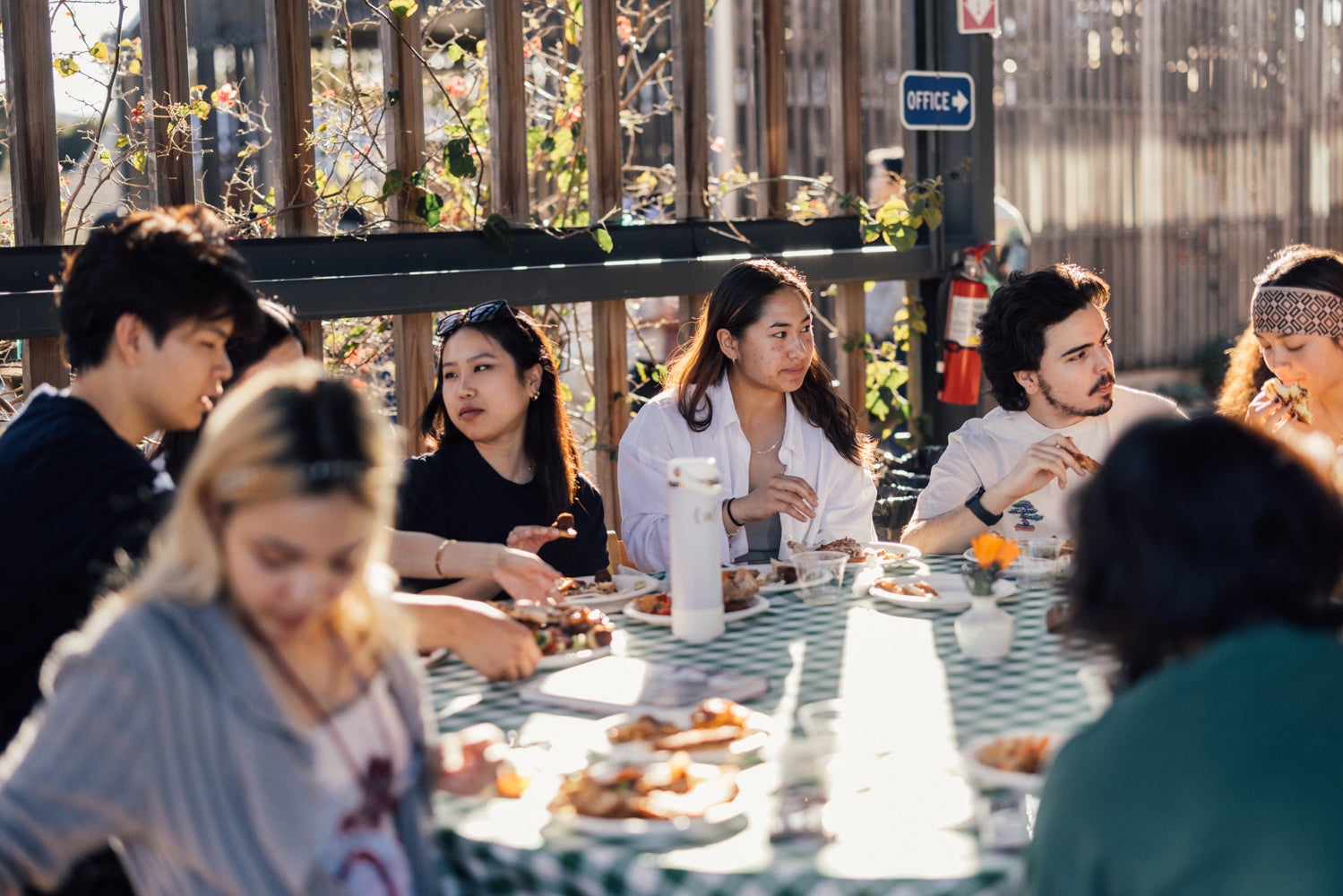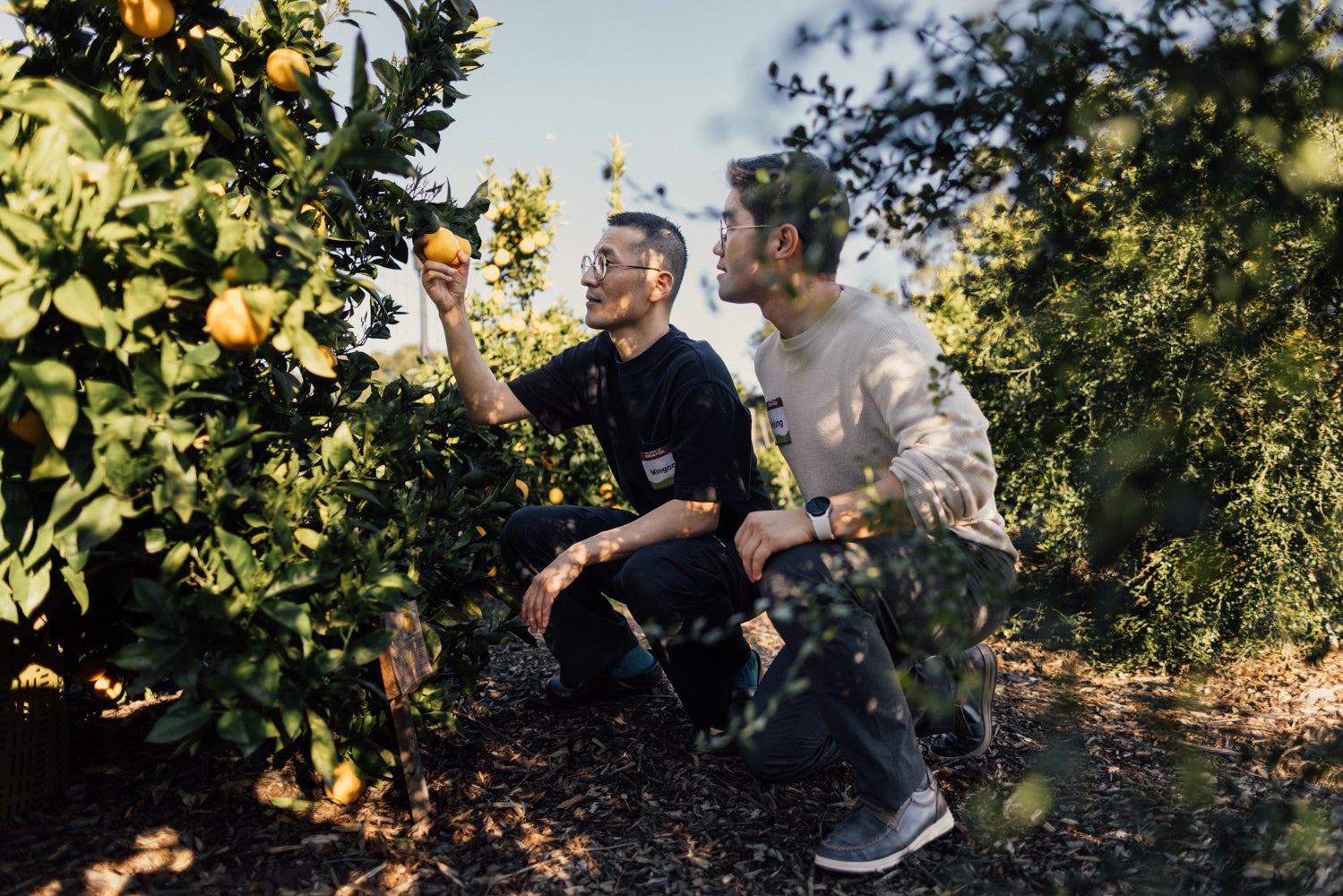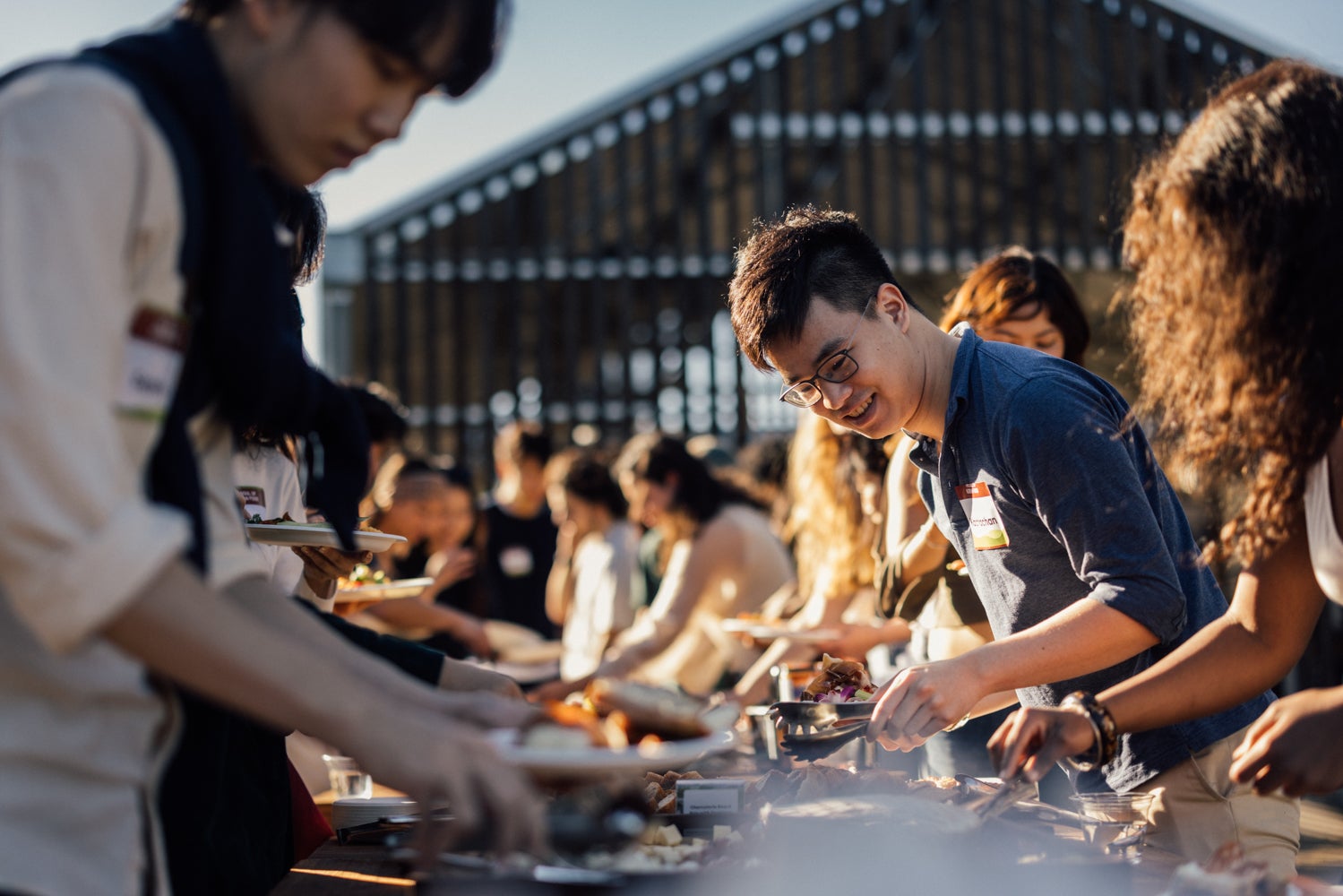Star chef Mingoo Kang visits the Farm
Star chef Mingoo Kang of Korea discusses the popular Korean ingredient jang at the O’Donohue Family Stanford Educational Farm. (Image credit: Andrew Brodhead)
On Friday, about 120 Stanford community members gathered at the O’Donohue Family Stanford Educational Farm, where star Korean chef Mingoo Kang prepared a rare multicourse culinary experience.
Attendees enjoyed Kang’s apple and cucumber kimchis, roasted vegetables, a crudité platter, tofu and endive salad, a charcuterie board, and more. Most of his dishes incorporated an ingredient common in Korean cuisine known as jang.

Stanford students enjoy chef Mingoo Kang’s jang-infused food, including ragu pizza and roasted vegetables. (Image credit: Andrew Brodhead)
“In almost any Korean food, there is jang. It is one of the most important ingredients to create the Korean taste,” Kang said.
Jang is made by fermenting soybeans and comes in liquid and paste form. Because it is plant-based, it is a healthy and sustainable food ingredient. It is also noted for its ability to blend with a variety of foods and cooking styles.
“It is easily applied to daily cooking and can expand to different culinary spaces, including Western foods. It’s very versatile,” said Kang, who has become known for his innovative use of jang to fuse traditional Korean and modern cuisines.
Friday’s event was hosted by the Stanford Food Design Lab, in collaboration with Stanford Engineering, the Stanford Doerr School for Sustainability, and Residential & Dining Enterprises (R&DE). It brought together faculty, staff, students, researchers, alumni, and members of the broader community who are interested in food innovation or sustainable eating.
Fermented foods
Fermentation is the process of creating or altering food using microbes. Yeast enzymes, for example, convert sugars and starches into alcohol. Fermented foods like pickles and sauerkraut remain popular staples in Western food, just as kimchi is in Korean cuisine. But experimenting with fermentation is becoming more common across cultures.

Chef Mingoo Kang and Stanford doctoral student HoJung Choi explore citruses at the O’Donohue Family Stanford Educational Farm. (Image credit: Andrew Brodhead)
Friday’s event included a brief panel discussion with Stanford affiliates to discuss such food innovation. Alice Pyo, the outreach and community engagement program manager in R&DE, said that to preserve the essence of a culture while innovating for food, chefs must think carefully about their intention.
“Are we trying to really preserve the essence of the tradition that we want to honor and using that as the foundation for creativity and for innovation to flourish?” she asked. “I think having that intent at your core is [key].”
Fermented foods have been found to enhance the diversity of gut microbes and improve immune responses. As a result, they can help researchers learn what treatments or strategies work best to improve outcomes for patients with, for example, depleted microbiomes. Professor Christopher Gardner, who researches the potential health benefits of various dietary components or food patterns at Stanford Medicine, said there is growing interest in the health benefits of fermentation.
“This idea of coming in with fermented foods and the microbiome is very hot in the field of nutrition and health right now,” said Gardner, who is the Rehnborg Farquhar Professor at Stanford Medicine “Now we have different interventions – we can intervene with kimchi, or sauerkraut, or kombucha, and we get a different outcome.”
Innovating at Stanford
During Friday’s event, Kang signed copies of his book, Jang: The Soul of Korean Cooking, while attendees dined on his jang-infused meal, which was prepared by Stanford Dining chefs.
“Two dishes I loved were the ganjang ragu pizza and gochujang chocolate mousse,” said Soh Kim, MA ’07, executive director of the Food Design Lab. Housed within Stanford Engineering, the lab conducts food-related research and convenes academics and practitioners in the field of food design to explore new ideas and innovations.
“Our work is rooted in design thinking,” said Kim. “And we look at food as a human-centered product.”

Students and other guests enjoyed the buffet of jang-infused dishes by chef Mingoo Kang. (Image credit: Andrew Brodhead)
The Food Design Lab hosts outreach events and workshops. It also offers the course CEE102F: Food, Design and Sustainability, which exposes Stanford students to the landscape of food innovation with a focus on increasing the sustainability of the traditional food production cycle.
Soh said food innovation efforts are taking place across campus. At Stanford Medicine, Gardner researches nutrition and the health benefits of certain foods. He recently discussed a Stanford Medicine-led trial of identical twins comparing vegan and omnivore diets on the Netflix series You Are What You Eat.
R&DE’s offers the popular Teaching Kitchen @ Stanford, where students learn the fundamentals of cooking while gaining knowledge in nutrition, sustainability, and kitchen safety. And at Stanford Graduate School Business, the course STRAMGT 306: Food, Health & Nutrition Entrepreneurship examines the food system from three points of view: the consumer, nutritional science, and policy.
The Food Design Lab’s next event, “FoodInno: From Tide to Table,” is May 24 and will explore the future of sustainable seafoods. More information, including a list of upcoming events, is available on the Food Design Lab website.











